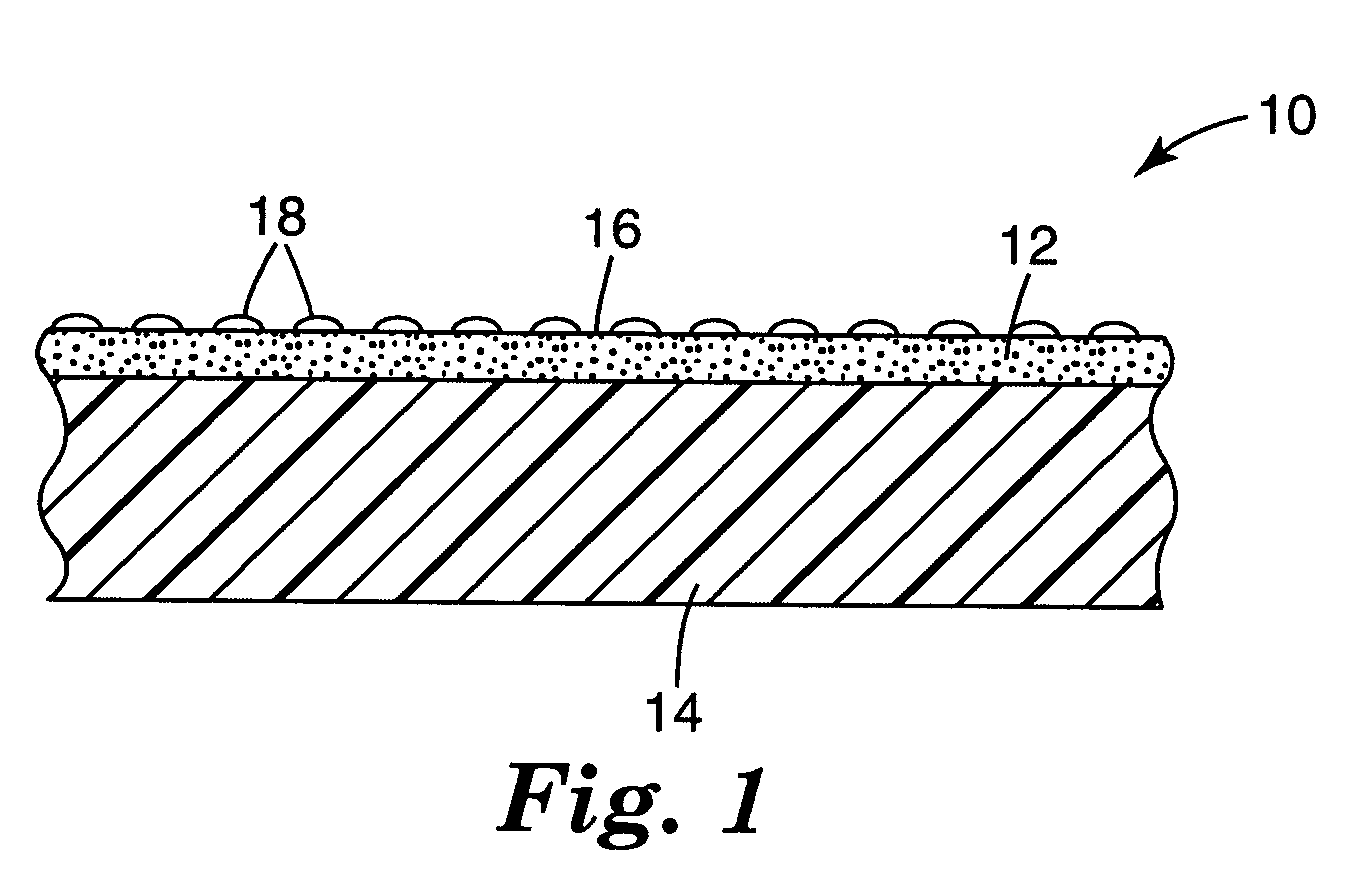Biologically-active adhesive articles and methods of manufacture
a technology of biological actives and adhesive articles, applied in the direction of biocide, bandages, dressings, etc., can solve the problems of reducing the effectiveness of wound care articles, biological actives applied to wound care articles typically affect the physical properties of psa layers, and increasing the risk of bacterial infection
- Summary
- Abstract
- Description
- Claims
- Application Information
AI Technical Summary
Problems solved by technology
Method used
Image
Examples
example 1
[0099] A fluid solution of 1.0% silver (I) oxide and 5.0% ammonium carbonate in water was prepared by heating the mixture to 60° C. and stirring until the silver (I) oxide was dissolved. The fluid solution was inkjet printed at 100% surface coverage onto the adhesive surface of Tegaderm with a “XAAR XJ128-200 printhead”. The printhead was piezoelectrically driven at 1.25 kHz and 35 V, with a printing resolution of 300×300 dpi. This generated drops of the fluid solution with nominal volumes of about 70 pL. The sample was then dried in an oven at 150° C. for 10 minutes.
example 2
[0100] The fluid solution of Example 1 was inkjet printed at 200% surface coverage onto the adhesive surface of Tegaderm and dried, pursuant to the inkjet printing method described in Example 1.
example 3
[0101] The fluid solution of Example 1 was inkjet printed at 100% surface coverage onto the adhesive surface of Tegaderm, pursuant to the inkjet printing method described in Example 1, except that the coated sample was dried at room temperature (25° C.) for 24 hours.
PUM
| Property | Measurement | Unit |
|---|---|---|
| Fraction | aaaaa | aaaaa |
| Fraction | aaaaa | aaaaa |
| Fraction | aaaaa | aaaaa |
Abstract
Description
Claims
Application Information
 Login to View More
Login to View More - R&D
- Intellectual Property
- Life Sciences
- Materials
- Tech Scout
- Unparalleled Data Quality
- Higher Quality Content
- 60% Fewer Hallucinations
Browse by: Latest US Patents, China's latest patents, Technical Efficacy Thesaurus, Application Domain, Technology Topic, Popular Technical Reports.
© 2025 PatSnap. All rights reserved.Legal|Privacy policy|Modern Slavery Act Transparency Statement|Sitemap|About US| Contact US: help@patsnap.com



